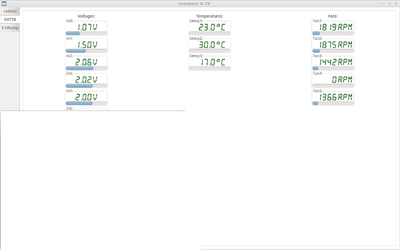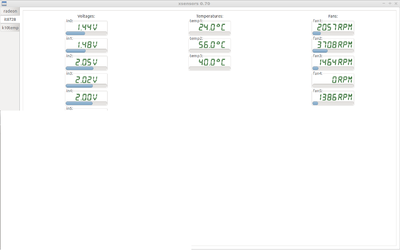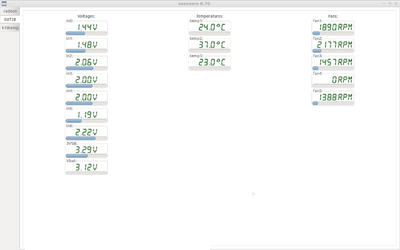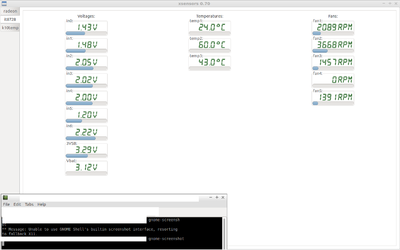- Joined
- Mar 18, 2015
I put this here instead of the linux section because I think this is more of a stability problem than anything to do with the OS. But Ill check in there if need be. Until then let e know what you guys think 
I build a home NAS machine that consists of the following parts:
Gigabyte 970a-d3p
330W Seasonic PSU
2x2GB Elipeda
Im kinda sketchy on the GPU - AMD 5450 maybe? its a low powered AMD card with a passive heatsink. I will dig up the actual part name if it will help
CPU AMD Athlon II x2 270
.... and a bunch of drives Soon to be less drives with a higher capacity.
Soon to be less drives with a higher capacity.
Here is the issue. I cant stability test my OC accurately in Ubuntu! I pushed the chip from 3.6Ghz up to 4.0 Ghz with no troubles at all. The cooling is more than sufficient as I used the setup from the Phenom II I had in the case before. So Im basically running a 65W chip in cooling meant for twice as much
Linux tools that I can find will stress the cpu and list at 100% stress. Temps approach 45C after hours of testing but are stable right there (also there is a heater vent blowing right into the case when tepms are this high - not ideal I know but I did the best I could for placement and the temps arent out of line ). The problem comes in when I try to encode any of my Mpeg files to h.264 . I cant do it. System shuts down after about 15 min.
I know you guys usually need some looks at CPU-z and such but I cant get them without installing Windows and that is a last resort. I already went a little pushed the CPU voltage up some because I have headroom , the HT Link and NB frequencies are as high as they can go for this chip (2000) , and Im not sure if messing around with the NB voltages is going to gain anything if I cant raise the NB frequency.
As I said before Im really just looking for some guru action from OC'ers that might have an educated guess. I know you might need more info and Ill get it if its called for ... but Id hate to install windows and have looks at CPUz and HwMonitor just to find out that my chip is already maxed out!
I build a home NAS machine that consists of the following parts:
Gigabyte 970a-d3p
330W Seasonic PSU
2x2GB Elipeda
Im kinda sketchy on the GPU - AMD 5450 maybe? its a low powered AMD card with a passive heatsink. I will dig up the actual part name if it will help
CPU AMD Athlon II x2 270
.... and a bunch of drives
Here is the issue. I cant stability test my OC accurately in Ubuntu! I pushed the chip from 3.6Ghz up to 4.0 Ghz with no troubles at all. The cooling is more than sufficient as I used the setup from the Phenom II I had in the case before. So Im basically running a 65W chip in cooling meant for twice as much
Linux tools that I can find will stress the cpu and list at 100% stress. Temps approach 45C after hours of testing but are stable right there (also there is a heater vent blowing right into the case when tepms are this high - not ideal I know but I did the best I could for placement and the temps arent out of line ). The problem comes in when I try to encode any of my Mpeg files to h.264 . I cant do it. System shuts down after about 15 min.
I know you guys usually need some looks at CPU-z and such but I cant get them without installing Windows and that is a last resort. I already went a little pushed the CPU voltage up some because I have headroom , the HT Link and NB frequencies are as high as they can go for this chip (2000) , and Im not sure if messing around with the NB voltages is going to gain anything if I cant raise the NB frequency.
As I said before Im really just looking for some guru action from OC'ers that might have an educated guess. I know you might need more info and Ill get it if its called for ... but Id hate to install windows and have looks at CPUz and HwMonitor just to find out that my chip is already maxed out!



